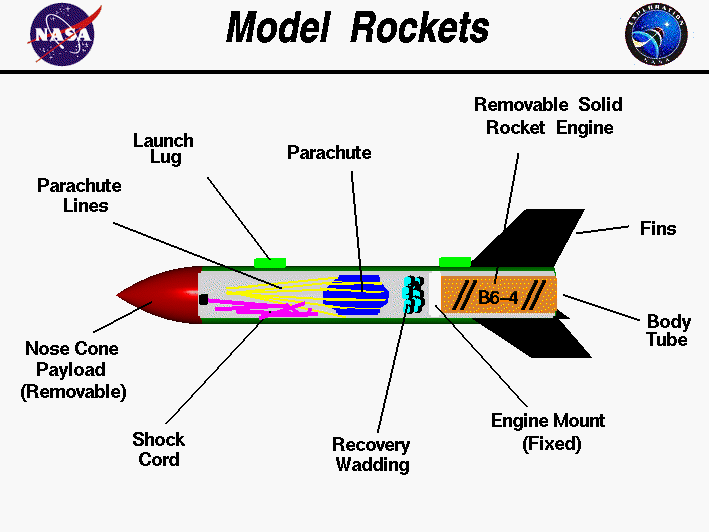I love rockets. My Bachelor's degree is in Aerospace Engineering and I've been interested in rockets since I was a kid. My dad worked on the main engines for the Saturn V rocket when he worked at Pratt & Whitney as a chemist, I've designed and manufactured parts for the space program as an engineer, and my senior project in college was designing a two-state-to-orbit space vehicle. I've found that all kids seem to have some interest in rockets and I use that as a great end-of-the-year project in my physics class.
 +
+I found a great resource from NASA - The Rockets Educator Guide - that includes lesson plans and activity ideas. NASA's site is a great resource for this type of project. This guide has some great activities like rockets using film canisters, baking soda, and vinegar, paper rockets, altitude trackers and more. There is even a part on the history of rockets.
This week, I was able to show one class the live launch of the Shuttle Endeavor on NASA TV, which is currently showing video of a space walk. I also use the video from Rush's "Countdown" song.
I start the project with a video of a shuttle launch and Rush's Countdown song (written after they viewed a shuttle launch in the 80's). Then the students do a webquest on NASA's site that explains the science of rockets. We also discuss rockets and space flight and then start linking the topics we've done in the past to this project. I also bring in the chemistry behind solid rocket engines.

The students then get model rocket kits and build the model rockets. The rocket kits are challenging and call for the students to read and understand the directions and figure a few things out for them selves. They have to perform a stability test on the rockets and then calculate the predicted altitude. When we launch the rockets, we use altitude trackers and some trigonometry to find the actual altitude and compare it to the calculated altitude. We then talk about what could have caused the discrepancies.

You can extend the unit and do more activities from the educators guide. You can also have students research space missions, current spacecraft, and the future of space travel.
Discovery Education Streaming has some great videos and resources, including the "NASA at 50", "Bill Nye Great Inventions" and "When We Left The Earth: The NASA Mission" series.
The students learn a lot, see an application of what they have learned, work as a team, and have some fun. It's a great way to end the year.
Topics in this unit:
history of rockets
transportation
energy transformations
fluid dynamics
thermodynamics
aerodynamics
chemistry of solid fuel engines
stability
Newton's Laws
Gravity
air resistance
Skills:
Teamwork
communication
reading comprehension
manual dexterity
application of knowledge
problem solving
math
Resources needed:
computer with internet to connect to NASA website
NASA Rockets Educator Guide - free
Model rocket kits, engines, and launcher (available from a variety of companies and suppliers. I use Estes).
(funding for these supplies have been through Donor's Choose and an Air Force Association classroom grant).
Rockets resources:
NASA's Beginners Guide to Rockets: http://www.grc.nasa.gov/WWW/K-12/rocket/index.html
Estes Model Rockets - Educator Page: http://www.esteseducator.com/
Apogee Rockets - http://www.apogeerockets.com/ (click on "Educational")
National Association of Rocketry: http://www.nar.org/teacher.html
Fly Rockets: http://www.flyrockets.com/
NASA Educator's Resource Centers http://www.nasa.gov/audience/foreducators/k-4/learning/F_Educator_Resource_Center_Network.html
.jpg)
